SPEAKERS
Keynote Speakers

Prof. Andy Knight
University of Calgary, Canada
DER Integration – Technology and Beyond
Abstract: The desire to transition to high penetration of clean renewable energy is ubiquitous. However, the challenges to be overcome to enable this transition are dependent on local conditions. Existing grid infrastructure, load characteristics, policy, politics, climate and geography all influence the technical requirements that engineers must meet to enable further DER integration.
This presentation will address some of the approaches to support integration of renewable energy from large systems to microgrids. The influence of each of the above external non-technical factors on the technical solutions is explored, with specific case studies based in Canada. These include the impact of temperature on energy storage systems, need for microgrids for resiliency to wildfire, solutions to maximize transmission system usage and methods to design microgrids around existing infrastructure.
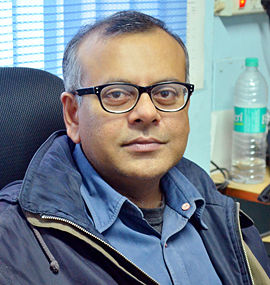
Prof. Parthasarathi Sensarma
IIT Kanpur
Micro-inverters
Abstract: Micro-inverters acquired a unique niche when its use as the PV-panel junction box replacement turned the erstwhile fickle dc output into a grid-quality power source. Back-end operation of the micro-inverter comprises controlled dc power extraction from the PV panel while its front-end ensures controlled ac power injection into single-phase ac power lines. Depending on how these functions are distributed among its sub-circuits, micro-inverters are classified as 2-stage and single-stage, some of which are highlighted in this lecture. Some aspects of dynamic modelling and controller design are also addressed.
A popular option in micro-inverter topologies is the incorporation of galvanic isolation, not necessarily at the line frequency, some of which are addressed. An inherent instantaneous mismatch between the steady-state dc input and ac output powers also gave rise to several solutions for buffering this mismatch. Traditionally this had been addressed by overdesign, with implications on size and reliability, but some later solutions achieved this variously through dedicated control or circuit enhancements. A few of these are touched upon.
Prof. Frede Blaabjerg
Aalborg University, Denmark
Design for reliability in power electronic systems
Abstract: In recent years, the automotive and aerospace industries have brought stringent reliability constraints on power electronic converters because of safety requirements. Today customers of many power electronic products expect up to 20 years of lifetime and they also want to have a “failure free period” and all with focus on the financials. The renewable energy sectors are also following the same trend, and more and more efforts are being devoted to improving power electronic converters to account for reliability with cost-effective and sustainable solutions. This presentation will introduce the recent progress in the reliability aspect study of power electronic converters for power electronic applications with special focus on renewables. It will cover the following contents: the motivations for highly reliable electric energy conversion in renewable energy systems; the reliability requirements of typical renewable energy systems and its implication on the power electronic converters; failure mechanisms and lifetime models of key power electronic components (e.g., power semiconductor switches, capacitors, and fans); long-term mission profiles in Photovoltaic (PV) and wind power applications and the component level stress analysis; reliability analysis methods, tools, and improvement strategies of power electronic converters for renewable energy systems. A few case studies on PV and wind power based renewable energy systems will also be discussed.
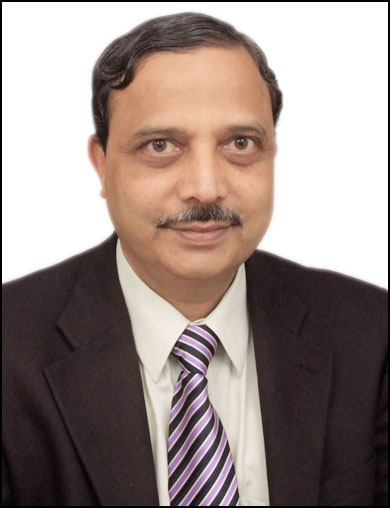
Prof. S. C. Srivastava
IIT Kanpur
Smart Distribution Systems: Challenges and Field Implementation
Abstract: Increased use of converter interfaced Distributed Energy Resources (DERs) offers new opportunities and challenges in the power system networks. Microgrids integrating Renewable Energy Sources (RES) and Energy Storage Systems (ESS) are being increasingly deployed not only to provide clean energy access to remote communities and strategic/building complexes, but also to increase resiliency and reliability of supply, provide flexibility and back up power to the main network while helping in addressing the global environmental concerns. Operation of Smart Distribution Systems integrating microgrids, renewable sources and storage require proper control and protection systems to be designed. Advance Distribution Management Systems (ADMS) are required to ensure optimal power sharing, storage management, maintaining required power quality and stability of supply.
The main focus of an Indo-US joint project ‘UI-ASSIST’, involving 31 consortia partners from US and India, was to work on all aspects of future smart distribution networks integrating RES, ESS and microgrids. Both India and US teams have set up field demonstration pilots, five in each country, containing microgrids under rural, semi-urban and urban settings. This talk will briefly discuss the technical details and challenges faced in developing Smart Distribution Systems and will share experiences in setting up some of the field pilots set up in India by the UI-ASSIST team.
Dr. Brij Singh
Manager, John Deere, USA
The Value of Electrification in Heavy-Duty Vehicles
Abstract: John Deere commitment to sustainability and product innovation need emerging technologies. John Deere electrification projects have accelerated sustainable and economic outcomes for off-road vehicles’ customers. It is expected that power electronics will save the world and make earth a better planet. It is necessary to harness potentials of the power electronics and electrification technologies in the eMobility applications including off-road equipment. In vehicle power management, the power electronics systems have potential to raise vehicle efficiency and to offer a significant value proposition in the energy intensive activities of the heavy-duty equipment required for the farming, constructions, and mining. This presentation covers publicly known electrification projects completed and in-progress within John Deere and value propositions of the electrification technologies for heavy-duty vehicles and the eMobility solutions.
Tutorial Speakers
Power Electronic Convertors for EV Charging and V2G Connectivity
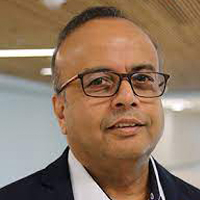
Prof. Prasad Enjeti
Texas A&M University, USA
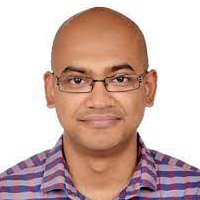
Prof. Kaushik Basu
Abstract: Electric vehicles (EVs) have emerged as a transformative force in the automotive industry, offering a sustainable and environmentally friendly alternative to traditional internal combustion engine vehicles. Developing efficient and adaptable charging infrastructure becomes crucial as India shifts towards EV adoption to gain momentum. This tutorial presentation provides a comprehensive review of EVs, charging characteristics for a typical drive cycle, Power Electronics Converters for EV charging, and V2G (Vehicle-to-Grid) connectivity. The review explores various single-phase AC/DC converter types and their applications in on-board charging systems. Additionally, it examines the concept of Integrated EV chargers for EV scooters, provides converter examples, and highlights its potential within the realm of electromobility. Furthermore, this review also discusses the utilization of Integrated solid-state transformers, a family of direct three-phase AC/DC conversion solutions particularly suited for Level 3 charger applications.
Emerging Trends of Modulation, Control and Design Methods in Power Converters
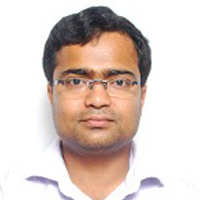
Prof. Santanu Kapat
Abstract: Switch mode power converters (SMPCs) play a central role in energy-efficient power conversion in emerging applications, such as electric vehicles, data centers, renewable energy, industrial automation, etc. In this context, the selection of suitable modulation and control techniques for SMPCs remains crucial in meeting challenging requirements in terms of transient performance, efficiency, stability, line and load regulation, disturbance rejection, etc. The majority of commercial controller implementations are still based on pulse width modulation and small-signal analysis. However, increasing switching frequencies using wide band-gap devices provides the opportunity to improve dynamic performance, energy efficiency, and size reduction.
This talk presents a summary of modulation and control techniques in switch mode power converters along with their advantages and shortcomings. Thereafter, small-signal modeling and controller design techniques are summarized for fixed-frequency control techniques.
Digital Control by State Space Approach
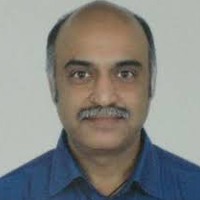
Prof.L.Umanand
IISc Bangalore
Abstract: Many of the limitations of the classical controls for multivariable feedback control systems can be overcome through state space methods. State space design is mainly a time-domain technique. The power of state space control has its roots in the fact that it can more easily represent MIMO as well as SISO systems. Here, all the loops of a MIMO system are closed simultaneously, which is in complete contrast to the one-loop-at-a-time procedure of classical controls design. Most controllers are located within a digital computing system like a microcontroller or DSP, and therefore the controllers invariably exist in the discrete domain. Discrete domain controllers need to be analysed and designed from a digital perspective. This tutorial will give introductory insights into Discrete state space control, discrete full state feedback, state augmentation, discrete full and reduced order estimation along with optimal estimation and control.
Impact of high renewable penetration and grid forming capability

Dr. Krishnakumar R. Vasudevan
Research Engineer
GE Research
Abstract: The amount of Inverter Based Resources (IBRs) in the transmission system has significantly increased due to the net-zero carbon emission target. The associated standards and specifications are more inclined towards the Grid-following (GFL) technologies mode to regulate the power and voltage in the network by governing the injected currents. However, the Grid-Forming Converters (GFMs) have gained substantial interest for supporting the future system operability with high penetration of renewables, due to their many more desirable qualities than Grid-Following Converters (GFLs), such as their stronger capacity to function in weak grids. The operational setback for the GFL comes into picture when the strength of the connected network is weak. Thus, the GFM converters are as a source of virtual inertia which paves the way to make up for the absence of synchronous inertia in power systems with IBR.
Cyber Threat Assessment and Mitigation in Power System Control Applications
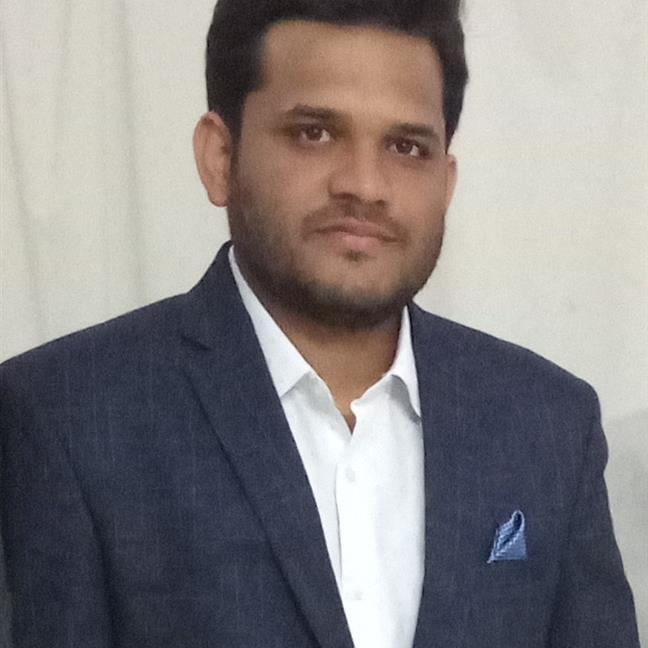
Sameer Singh
Technical Head
OPAL-RT TECHNOLOGIES India Pvt. Ltd.
Abstract: Cyber-connected OT devices have significantly improved automation and efficiency, but they also introduce vulnerabilities. Every communication line is an attack surface. Each attack vector’s modus operandi and impact can best be assessed in a lab-based simulation environment without imposing risk to the actual systems. Unfortunately, the testbed development process is not well established due to the complexity of integrating cyber and physical resources while also incorporating realistic simulations of physical systems, control systems, cyber-attacks, protocol vulnerabilities, data communication timing and network dynamics. A Cyber physical power system (CPPS) testbed architecture is a feasible option for various studies, including system / component vulnerability and impact assessment, evaluation, and mitigation, CPPS data model design and metrics development, compliance validation, education, and training. The study on the CPPS requires the development of the test-bench to develop the physical system and communication architecture with simulated cyber-attack in a safe laboratory environment. The CPPS co-simulation enables advanced approaches that link multiple software together to mimic both the power system and the communication network.
Simulating and evaluating Microgrids using Simscape

Dr. Debanand Singdeo
Senior Engineer, MathWorks India
Abstract: Microgrids developed in remote places ensure reliable and uninterrupted power. In this workshop, we will use Simscape to model a Microgrid, containing traditional rotating machinery, PV array, battery pack, and fuel cells. The system model will be developed, and the performance of the components will be independently verified under different fidelity levels. Finally, the components will be integrated to form the full microgrid system. Using the microgrid, the power management unit aspects will be explored under different scenarios. The examples covered will provide insights into developing, evaluating, and operating of microgrids.
